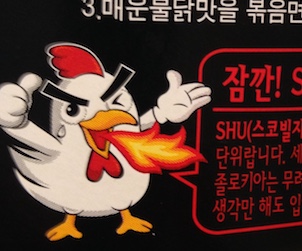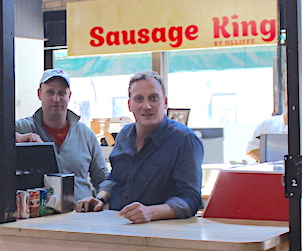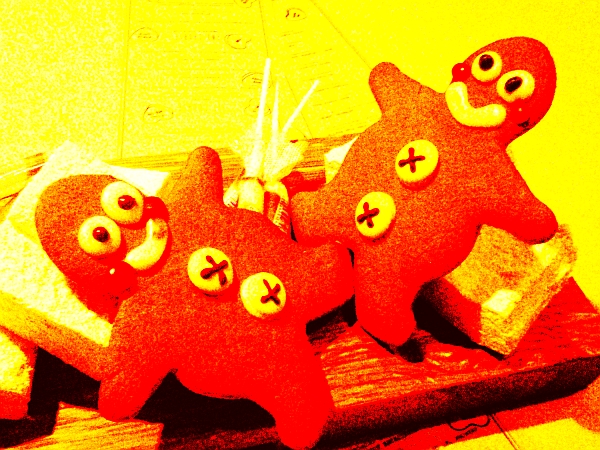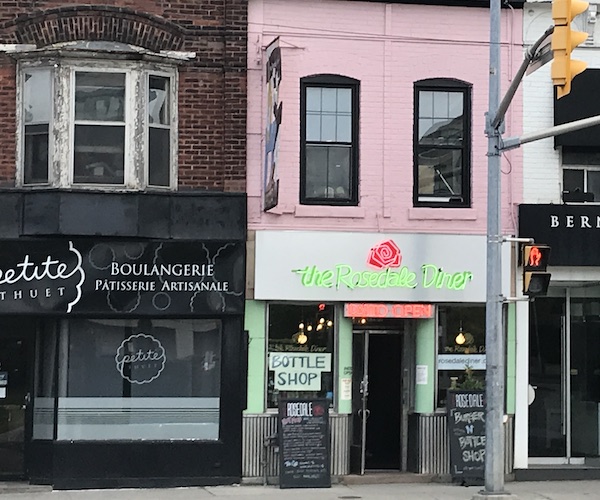Malcolm Jolley’s noodle tragedy in pictures.
 To cook is to know disaster. Anyone who cooks regularly knows and accepts this. I was acutely reminded of this truth this week when I tried to make a quick lunch at home with a packet of instant ramen noodles. Of all the dishes in the world instant ramen noodles must be among the easiest to make. This is the food of undergraduates in one room residences: all you need is a source of water, a kettle and a pair of chopsticks. (Maybe a spoon, but you could arguably drink the broth from the bowl.) I have been cooking for myself for more than 25 years, and writing about it professionally for a dozen. I ought to know what I’m doing, and yet the cardboard bowl of Samyang spicy ramen pictured above utterly defeated me. Here’s how with pictures.
To cook is to know disaster. Anyone who cooks regularly knows and accepts this. I was acutely reminded of this truth this week when I tried to make a quick lunch at home with a packet of instant ramen noodles. Of all the dishes in the world instant ramen noodles must be among the easiest to make. This is the food of undergraduates in one room residences: all you need is a source of water, a kettle and a pair of chopsticks. (Maybe a spoon, but you could arguably drink the broth from the bowl.) I have been cooking for myself for more than 25 years, and writing about it professionally for a dozen. I ought to know what I’m doing, and yet the cardboard bowl of Samyang spicy ramen pictured above utterly defeated me. Here’s how with pictures.
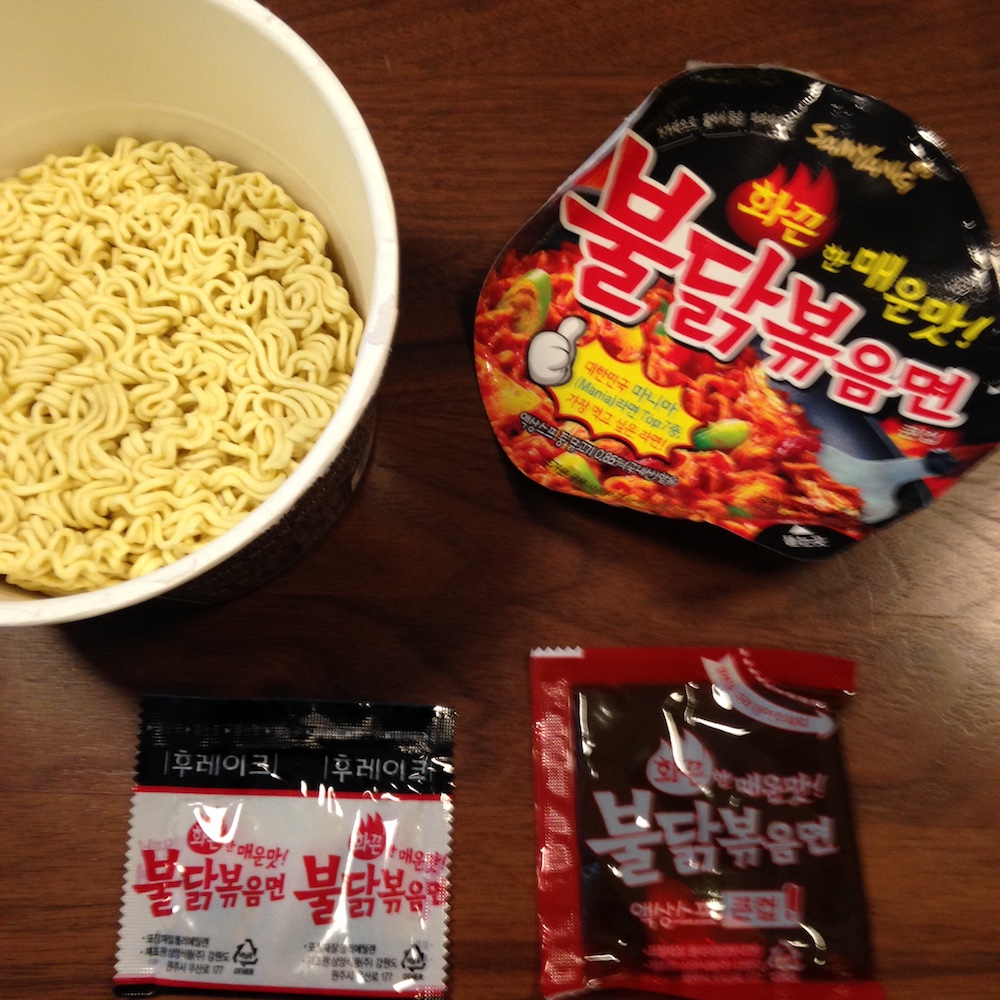 I bought the bowl of ramen some time ago: it was at least a year, maybe two years, old. I bought it on impulse at the big PAT grocery store on Bloor Street, in Koreatown. I go there to buy kimchi after a bowl of pork bone soup or kimchi stew at one of many cheap but good restaurants that line the street. The packaging must of caught my eye, especially the visual of the fire breathing, while crying, chicken on the side. To a chilli pepper addict like me, the flaming chicken promised a delicious home lunch, which was my intention a few days ago when the package caught my eye once again. (I also thought my meal might be a potential Lunch Under $10 piece, so started taking pictures.) I put on a kettle, and opened the lid to see what was inside. There was a mass of dried ramen noodles and two packages. This threw me. I was expecting a Knorr Swiss situation, where you just open the lid and everything ready to be hydrated into soup. One package had dried things in it, and the other had a gooey substance. Hmmm…
I bought the bowl of ramen some time ago: it was at least a year, maybe two years, old. I bought it on impulse at the big PAT grocery store on Bloor Street, in Koreatown. I go there to buy kimchi after a bowl of pork bone soup or kimchi stew at one of many cheap but good restaurants that line the street. The packaging must of caught my eye, especially the visual of the fire breathing, while crying, chicken on the side. To a chilli pepper addict like me, the flaming chicken promised a delicious home lunch, which was my intention a few days ago when the package caught my eye once again. (I also thought my meal might be a potential Lunch Under $10 piece, so started taking pictures.) I put on a kettle, and opened the lid to see what was inside. There was a mass of dried ramen noodles and two packages. This threw me. I was expecting a Knorr Swiss situation, where you just open the lid and everything ready to be hydrated into soup. One package had dried things in it, and the other had a gooey substance. Hmmm…
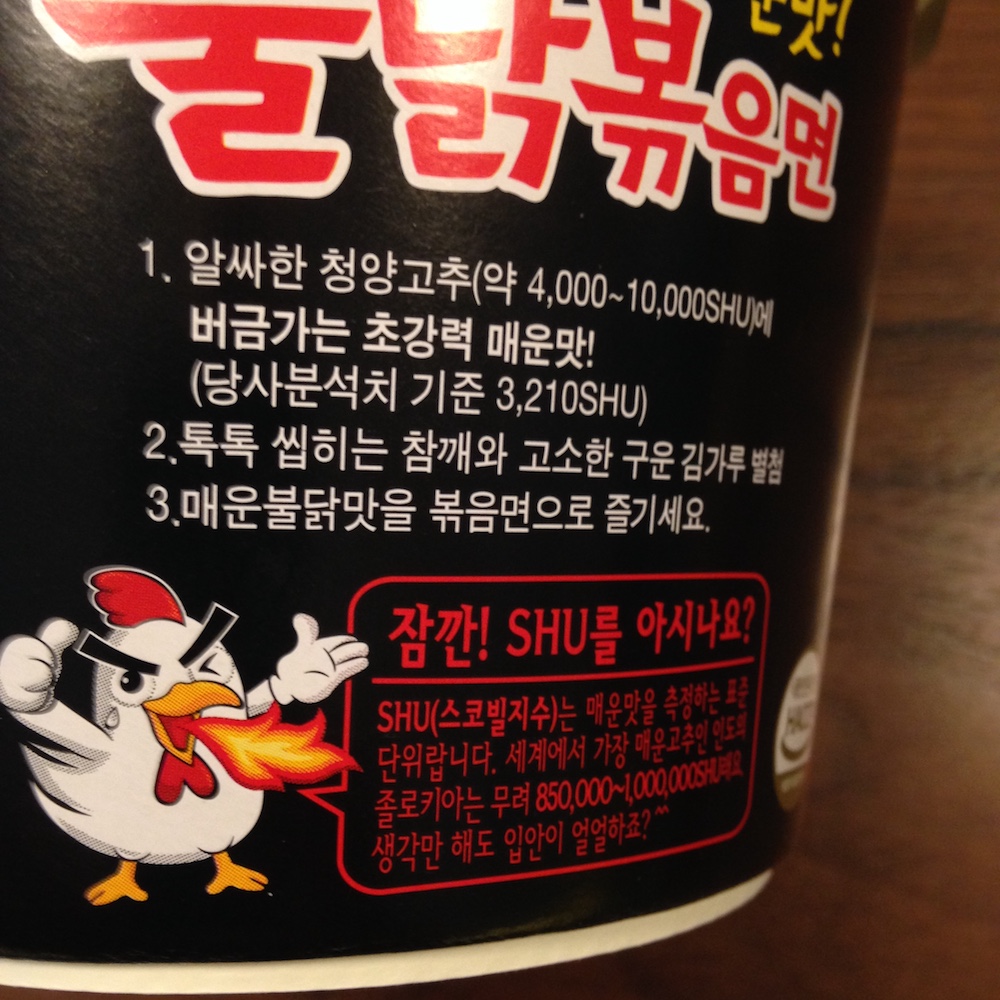 I should note at this point that I have no capability in the Korean language, which was the only language (I think) printed on the package of instant ramen. As my kettle heated up, I searched in vain for English instructions. There were none. I would have to improvise. I opened the dry package and poured its contents into the paper bowl of dried noodles. It looked like seasoning, which also threw me because I thought it was soup powder. If it wasn’t, then the goeey stuff must be. I opened the second package and tried a little bit on the tip of my finger. It was, as expected, hot. It was also kind of salty and meaty, like a bullion cube. This must be soup part, I reckoned and I squeezed the contents onto the seasoned dry noodles, waited for the kettle to boil, and added the hot water up to a few centimetres from the rim.
I should note at this point that I have no capability in the Korean language, which was the only language (I think) printed on the package of instant ramen. As my kettle heated up, I searched in vain for English instructions. There were none. I would have to improvise. I opened the dry package and poured its contents into the paper bowl of dried noodles. It looked like seasoning, which also threw me because I thought it was soup powder. If it wasn’t, then the goeey stuff must be. I opened the second package and tried a little bit on the tip of my finger. It was, as expected, hot. It was also kind of salty and meaty, like a bullion cube. This must be soup part, I reckoned and I squeezed the contents onto the seasoned dry noodles, waited for the kettle to boil, and added the hot water up to a few centimetres from the rim.
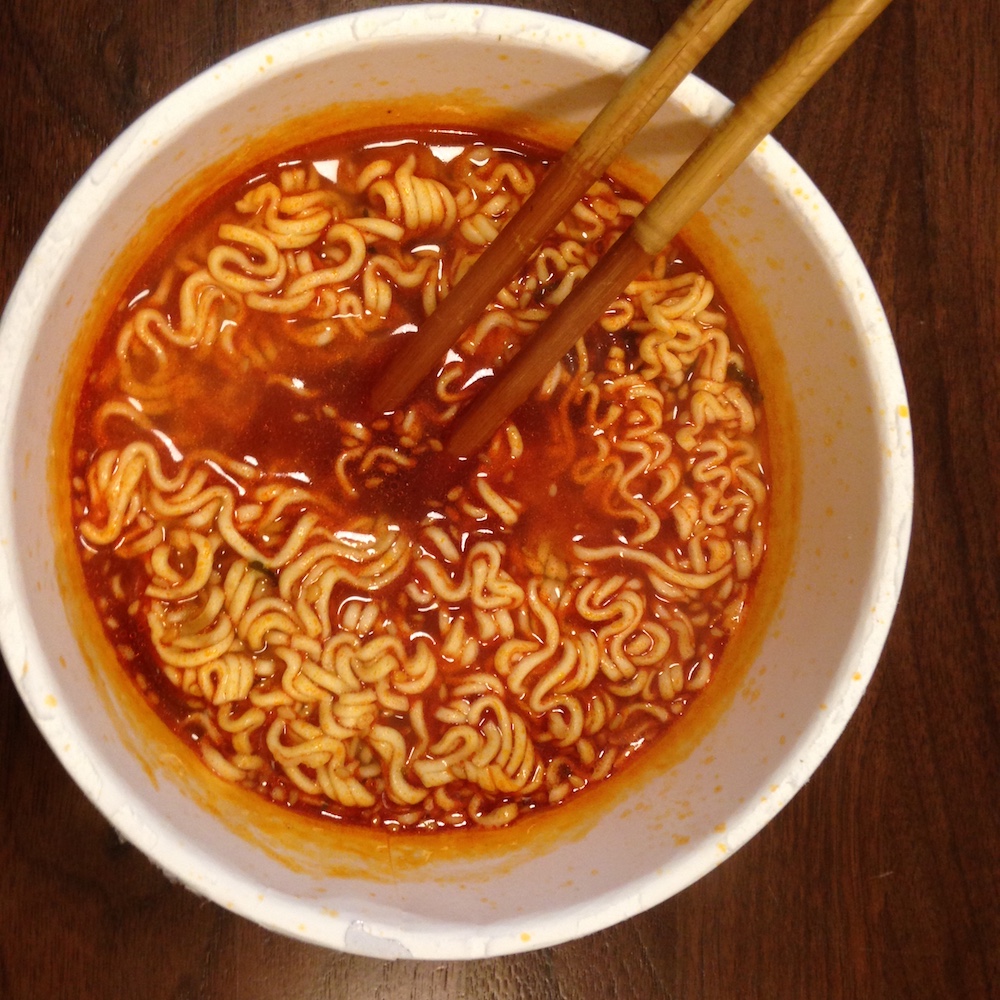 I have since learned, from after a session on Google, that this is not what one does with Samyang Extremely Spicy Chicken Ramen. If I could have read Korean, I would have likely been instructed to soften the noodles with the hot water, and then drain the water from the noodles before adding the sauce and seasoning. This apparently wasn’t a soup dish, it was simply a noodle dish. Of course, I had no idea at the time and was unpleasantly surprised by the result of my efforts.
I have since learned, from after a session on Google, that this is not what one does with Samyang Extremely Spicy Chicken Ramen. If I could have read Korean, I would have likely been instructed to soften the noodles with the hot water, and then drain the water from the noodles before adding the sauce and seasoning. This apparently wasn’t a soup dish, it was simply a noodle dish. Of course, I had no idea at the time and was unpleasantly surprised by the result of my efforts.
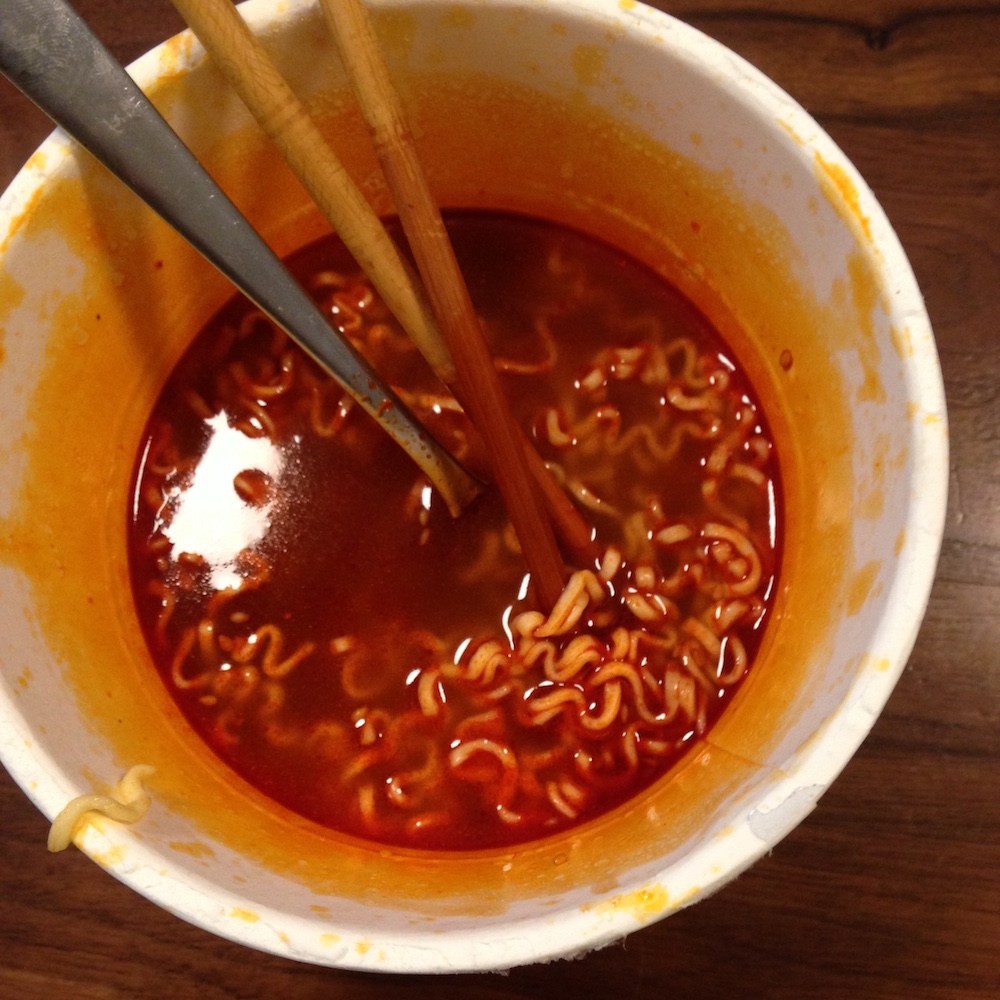
Every adventurous eater has, at some time, been the victim of a capsaicin overdose. Advice on how to deal with too much chilli in the mouth varies. Some advocate yoghurt, others bread, while in the Carribbean you may be told to eat sugar. What everyone will agree on is that if you’re suffering from a mouth on fire, the worst thing you can do is drink water, since this will merely have the effect of spreading the capsaicin more evenly around your mouth. The water will both intensify and prolong your suffering. By making a soup out of the ramen hot sauce, that is more or less what I did. I took a product that advertised as being very spicy (through the universal language of a cartoon chicken) and turned it up to eleven. I got about six spoonfuls in before I was overcame and had to abandon my lunch. It was inedible. Instead I had bread and butter, with a glass of ice water, when it was safe to drink.
I will henceforth leave ramen to the professionals.

